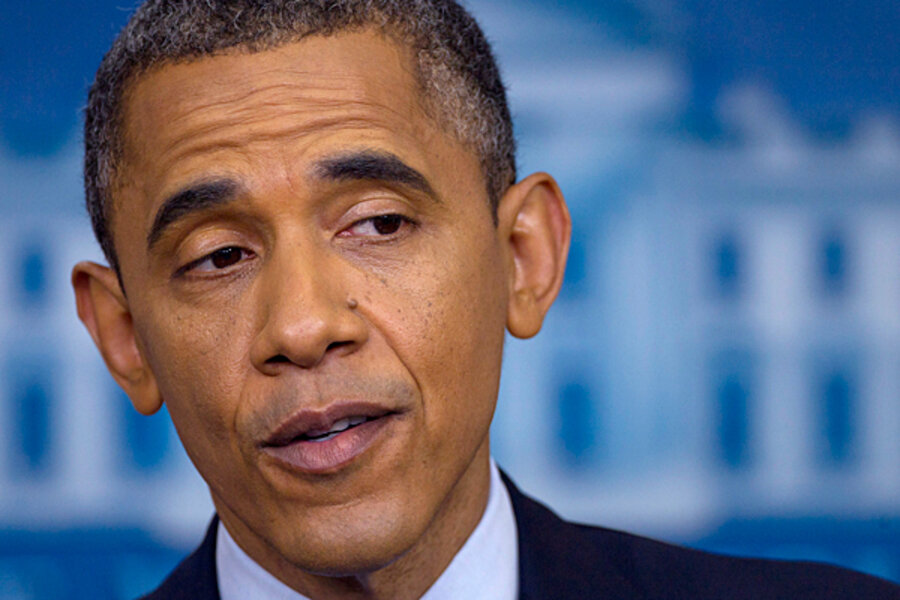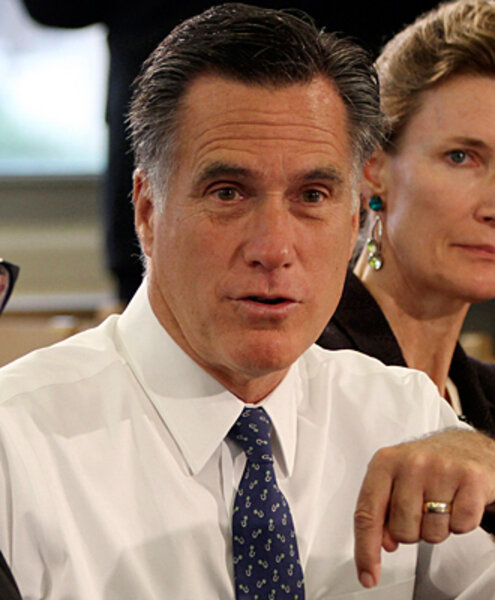In Midwest, fight over labor unions to be at heart of 2012 election
Loading...
| Chicago
The fight over labor unions in the Midwest is a big reason why this region is shaping up to be a major battleground in the general election this fall.
Four years ago, Barack Obama won the upper Midwest, where union membership is densest. But since then, Republicans in this part of the United States have targeted labor rights. Legislation curbed bargaining rights in Wisconsin and made Indiana a "right to work" state. Ohio Gov. John Kasich (R) signed a law that limited collective-bargaining rights for all public-sector workers, although voters repealed it last year.
Moreover, Illinois Gov. Pat Quinn (D) has proposed cuts to state pensions and closures of prisons, which has rankled organized labor because it would eliminate thousands of public jobs.
Confronted with such moves, unions have also mobilized. In Michigan, they're trying to put a measure on the November ballot that would make right-to-work legislation unconstitutional.
And overall, unions and their supporters are now spending big money: Whereas political-action committees representing unions parceled out $73.1 million for political activity in 2008, they've spent almost $2 billion since that time, according to the Center for Responsive Politics in Washington.
Although unions have had some reservations about Mr. Obama, they're still looking to him as their best ally. Meanwhile, Republicans who are hoping to further curb unions are putting stock in Mitt Romney.
"The Midwest is absolutely crucial in the presidential race," says Jeff Hauser, spokesman with the AFL-CIO. "Those are not states that can be taken for granted."
Since Obama took office, the numbers for union membership have shrunk. Nationally between 2008 and 2011, public and private union membership dropped by 3.3 percent. The numbers in the Midwest are more dramatic: a 14.5 percent slide in Wisconsin, 13.9 percent in Indiana, 12.9 in Michigan, 9.7 in Ohio, 8.1 in Pennsylvania, and 6.7 in Illinois, according to UnionStats.com.
Mr. Hauser says that four of the six states that the AFL-CIO plans to focus heavily on ahead of the election are in the Midwest: Wisconsin, Michigan, Ohio, and the western half of Pennsylvania. The strategy will be to pursue undecided voters through grass-roots organizing.
The economic uncertainty in the Midwest is expected to galvanize voter turnout, which is expected to help Obama, says labor historian Mike Smith of Wayne State University in Detroit.
"I would not be surprised if there was greater union turnout than what we had four years ago because so much has happened to labor unions in the Midwest, especially if you had thousands of members in each state who lost their jobs during the crisis," he says. "They're a group to be reckoned with."
But enthusiasm for Obama and other Democrats is expected to be somewhat blunted in certain areas of the Midwest where unions have felt betrayed, says Henry Bayer, executive director of the Illinois chapter of the American Federation of State, County, and Municipal Employees. Among other things, such betrayal stems from Obama's absence and the lack of financial support from the national Democratic Party during the recent gubernatorial recall election in Wisconsin, in which Gov. Scott Walker (R) retained his seat.
Still, such shortcomings don't amount to enough for unions to abandon Democrats for Republicans, labor experts say. "The fact is, the labor movement at large has not been happy with Obama because he hasn't done enough for them; but on the other hand, what's the alternative?" Mr. Smith says.







